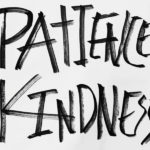No opinion, no theory, just details
I recently did a Motion Theater Improv workshop in Big Sur with Nina Wise. It was a fascinating week. She is a fascinating woman. There were days of nothing but improvised movement until she invited us to add words on one condition: no opinion or theory, just details.
This meant no “I like/dislike, love/hate…” no “I believe…” no “I find it interesting that…” no “I am angry, sad or happy because…” no “there were these two young lovers walking down the street…” and there was to be no rationale for why I or anyone else felt the way we did.
Nope, just details. Sounds easy doesn’t it?
I was not good at this.
Even though I stumbled around the last two days of the workshop, I enjoyed every minute of the experience. Since returning I have thought a lot about how my work depends upon my listening for the detail within the thicket of opinion and theory. I just didn’t realize it.
When there is a death, there are the details…
and then there are deeper details…
I spend hours each week working with bereaved individuals as they develop a narrative around the death of their loved one. While the process commences with their reporting recent detail, the final narrative is usually loaded with opinion and theory. As time passes, however, the grieving family member often shares the deeper details that defined their life with the deceased.
- A troubled adolescent is painfully missed, but the details reveal a family burdened by the boy’s erratic behavior while he was alive;
- a “wonderful” spouse was a pillar of the community, but the details expose the person’s cruelty when behind closed doors;
- an adult child isn’t sure how to live without his mother, but the details uncover how difficult she was to be around.
Of course not all relationships between the deceased and the remaining loved ones are complicated, but it’s more common than one would imagine. When intimate detail is shared in confidence there is no need for interpretation or theory. The need was simply to be heard.
The Details of David Sedaris’s Sister’s Suicide
I am a big fan of the NPR radio program This American Life. Once a week I invite Ira Glass, David Sedaris and others to come into my car or my house– and there we are—alone and intimate—together for an hour.
This past Saturday I realized, for the first time, how much the program’s appeal depends upon detail.
I was getting ready to pick up a gluten-free organic vegetarian cornmeal-crusted pizza at the local tony upscale market, which I seldom visit (how’s that for detail!). I was hungry. I thought This American Life was coming to an end, so I put on my jacket and grabbed my purse—just as Ira announced that David Sedaris would be reading his recent New Yorker article about his sister’s suicide. I put my purse back onto the counter and sat down on the stool at the end of the island in the kitchen to listen. I am glad I did, and now I invite you to listen to Sedaris talk about his sister Tiffany.
I also invite you to notice when Sedaris is expressing an opinion or theory – and when he is sharing detail. Notice that it is his detail that grabs your imagination and allows you to develop a sense of what it was like to be Tiffany, and what it was like to be her parent and brother and sister.
Sedaris’s story “Now We Are Five” starts at the 31-minute mark; if the audio commences at the beginning move the timeline cursor forward.
http://www.thisamericanlife.org/radio-archives/episode/517/day-at-the-beach?act=4
I have also included the transcript link if you prefer to read “Now We are Five:”





























